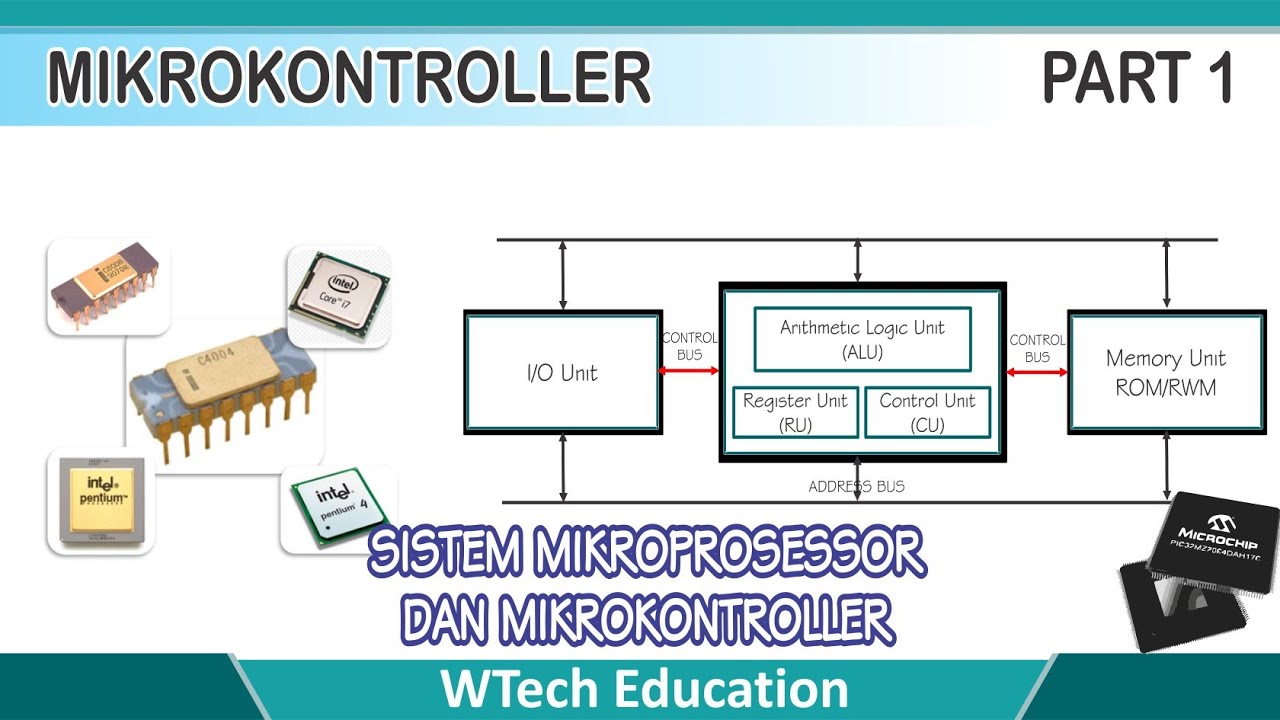Introduction to 8085 Microprocessor (μP)
Summary
TLDRThis educational video introduces the concept of word length in microprocessors, focusing on the Intel 4004, the first 4-bit microprocessor introduced in 1971. It explains how the 4-bit word length allows for processing, input, and output of 4-bit data chunks, performing 4-bit additions, and using place values for unsigned and signed representations. The video also covers the evolution to 8-bit microprocessors like the Intel 8085, highlighting their expanded range of numbers due to increased word length.
Takeaways
- 😀 The 8085 microprocessor is the focus of the session, with an introduction to its capabilities and specifications.
- 📚 The word length of a microprocessor is defined as the size of data it can handle at once, which is a key characteristic of its processing power.
- 🛠️ The Intel 4004, introduced in 1971, was a 4-bit microprocessor, meaning it could process four bits of data simultaneously, including performing 4-bit additions.
- 🔢 The place values for a 4-bit microprocessor in unsigned representation are 1 (2^0), 2 (2^1), 4 (2^2), and 8 (2^3), allowing it to represent numbers from 0 to 15.
- 💡 The Intel 4004 could only perform addition and subtraction within the range of 0 to 15 for unsigned numbers due to its 4-bit word length.
- ➕ In binary addition, a carry is generated when the sum of bits exceeds the bit capacity, which is then added to the next significant bit.
- 🚫 The Intel 4004 cannot perform operations resulting in numbers outside its 4-bit range, such as adding 8 and 9, which would result in 17.
- 🔄 The 4-bit microprocessor uses two's complement for subtraction, where the negative inverse of a number is found by inverting the bits and adding one.
- 🔢 In two's complement representation, the place values for a 4-bit microprocessor are 1, 2, 4, and -8, allowing it to represent numbers from -8 to 7.
- 🔄 The most significant bit in signed representation has a negative place value, affecting the range of numbers the microprocessor can represent.
- 📈 The evolution of microprocessors is highlighted, with the Intel 8085 being an 8-bit microprocessor capable of handling larger data sets and more complex operations than its 4-bit predecessors.
Q & A
What is the word length of a microprocessor?
-The word length of a microprocessor is the size of data it can handle at once, measured in bits.
What was the word length of the Intel 4004 microprocessor?
-The Intel 4004 microprocessor, introduced in 1971, had a word length of 4 bits.
How did the Intel 4004 perform 4-bit addition?
-The Intel 4004 performed 4-bit addition by taking two 4-bit inputs, processing them, and generating a 4-bit output, including handling carry operations.
What is the range of values that can be represented with a 4-bit unsigned representation?
-With a 4-bit unsigned representation, the range of values is from 0 to 15.
How does the Intel 4004 handle subtraction?
-The Intel 4004 handles subtraction using the two's complement technique, effectively performing addition of the minuend and the two's complement of the subtrahend.
What is the two's complement of a binary number?
-The two's complement of a binary number is found by inverting all the bits of the number and then adding one to the result.
What is the range of values that can be represented with a 4-bit sign representation?
-With a 4-bit sign representation, the range of values is from -8 to +7.
What is the significance of the most significant bit in sign representation?
-In sign representation, the most significant bit indicates the sign of the number, with 0 typically representing positive and 1 representing negative.
What is the difference between unsigned and sign representation in a microprocessor?
-Unsigned representation uses all bits to represent the magnitude of a number, while sign representation uses the most significant bit to indicate the sign of the number, with the remaining bits representing the magnitude.
Why is the range of values different for unsigned and sign representations in a microprocessor?
-The range is different because unsigned representation uses all bits for magnitude, allowing for a larger range of positive values, while sign representation dedicates one bit to indicate the sign, reducing the range of positive and negative values it can represent.
What is the word length of the Intel 8085 microprocessor?
-The Intel 8085 microprocessor has a word length of 8 bits.
What range of numbers can the Intel 8085 handle in unsigned representation?
-In unsigned representation, the Intel 8085 can handle numbers from 0 to 255 (2^8 - 1).
What range of numbers can the Intel 8085 handle in sign representation?
-In sign representation, the Intel 8085 can handle numbers from -128 to +127.
Outlines

此内容仅限付费用户访问。 请升级后访问。
立即升级Mindmap

此内容仅限付费用户访问。 请升级后访问。
立即升级Keywords

此内容仅限付费用户访问。 请升级后访问。
立即升级Highlights

此内容仅限付费用户访问。 请升级后访问。
立即升级Transcripts

此内容仅限付费用户访问。 请升级后访问。
立即升级浏览更多相关视频

1 4 Evolution Du Microprocesseur

Introduction to Microprocessors | Skill-Lync

Introduction to Microprocessors || History || Evolution || Generations || of Microprocessor

The World's First Microprocessor: F-14 Central Air Data Computer

Sistem Mikroprosesor & Mikrokontroler Part 1

Memory Banking in 8086 Microprocessor: Basics and Control Signals
5.0 / 5 (0 votes)
